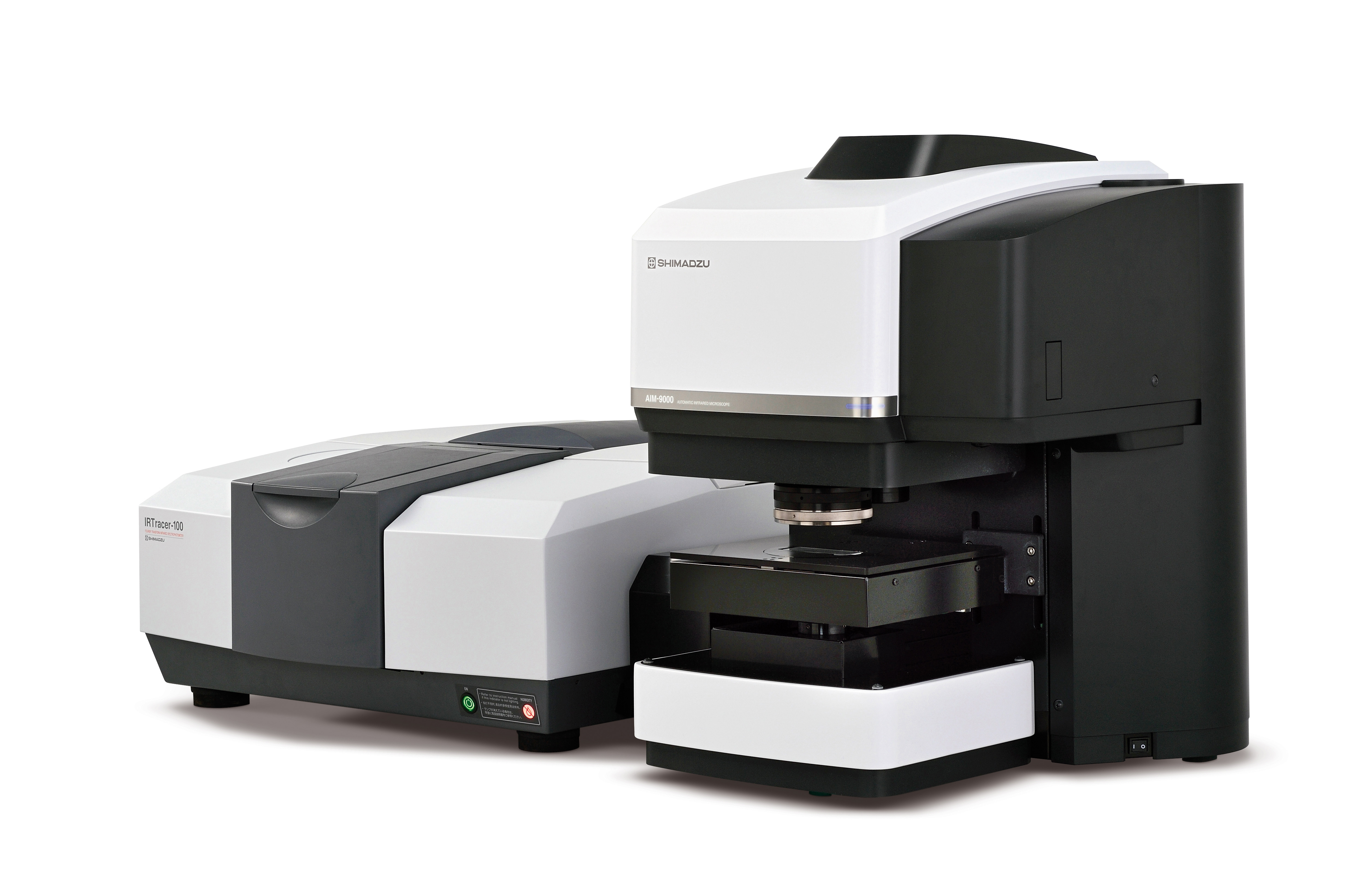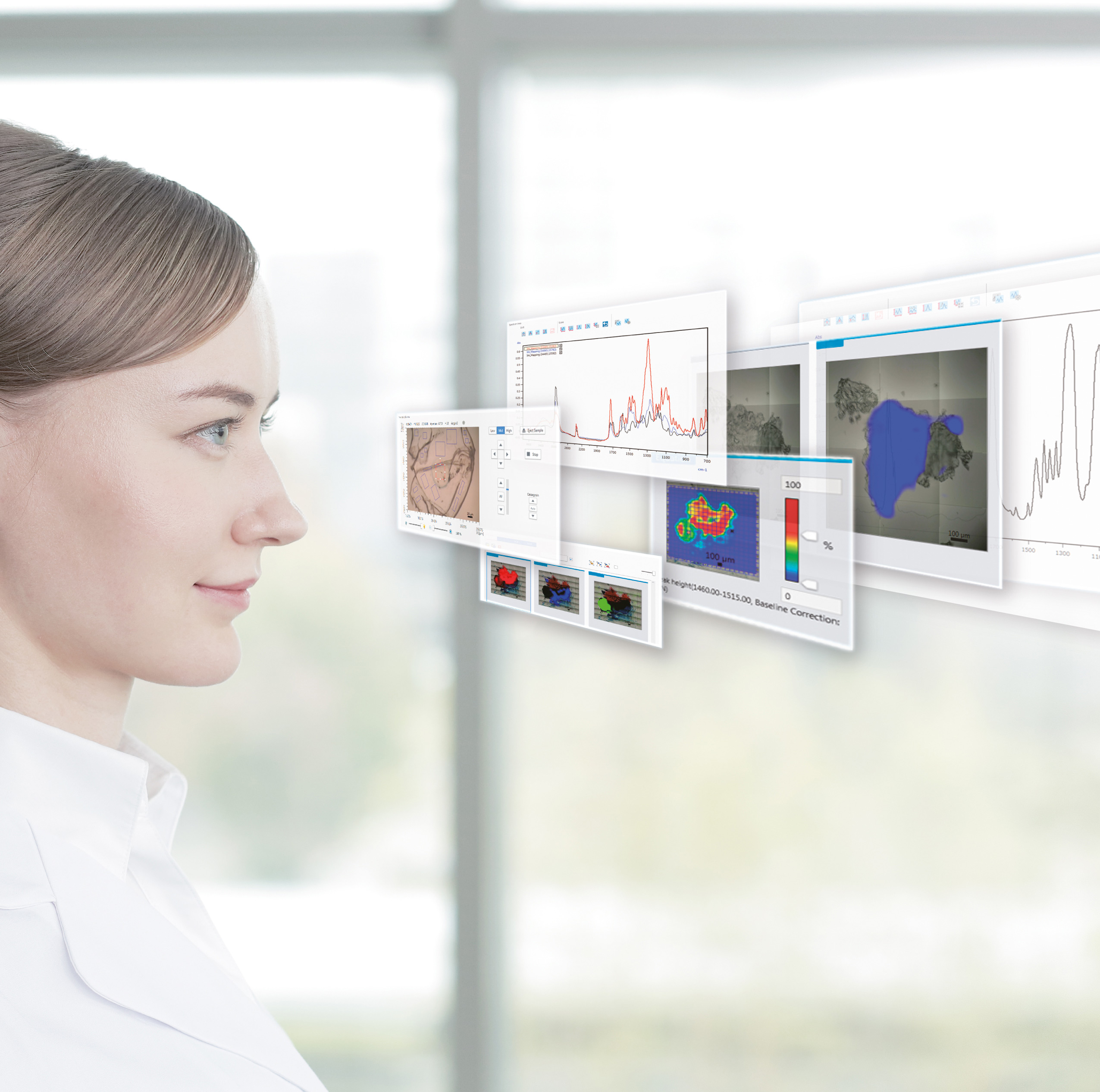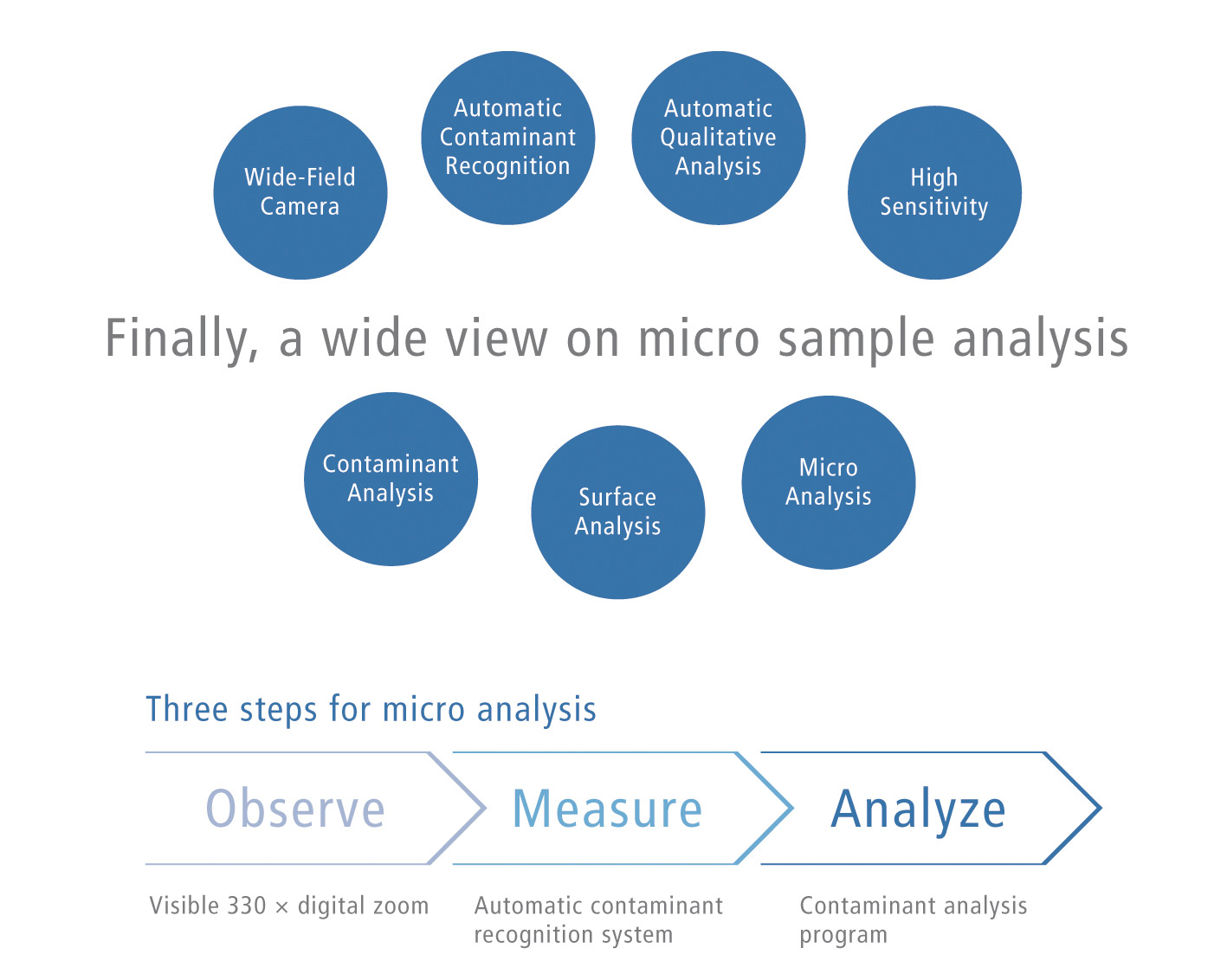Multipurpose tool for tiny objects
AIM-9000 infrared microscope: automated microanalysis for contaminations and microparticles
 Figure 1: AIM-9000 in combination with Shimadzu’s FTIR IRTracer-100
Figure 1: AIM-9000 in combination with Shimadzu’s FTIR IRTracer-100
Infrared microscopy is considered to be the ultimate highlight in molecular spectroscopy. With a few simple steps, complex questions about tiny sample particles can be easily answered. ‘Tiny’ refers to ‘micrometer range.’ The measurement technology or more specifically, the applied radiation wavelength, limits the sample size. The mid-infrared range of approx. 4,000 – 400 cm-1 can only be applied to measuring spots with a minimum size of at least 5 µm, because 5 µm corresponds to the wavenumber 2,000 cm-1 in infrared spectroscopy.
In the past, key words like contaminations of products, forensics or failure analysis have been used. Today, discussions focus on the topic of microparticles and their identification. Particles that are smaller than 250 µm are of particular interest, for example particles that are found in the stomachs of animals (seals, dolphins, sea birds) or particles in foods (black particles in honey, particles on pizzas or in filled bottles). The relevance of this topic is covered by the application range of Shimadzu’s new AIM-9000 fully automatic FTIR infrared microscope.
Good measurement parameters for the analysis of the tiniest spots
The AIM-9000 is an automatic failure analysis system and is optimized for automated observation, the definition of measurement spots, as well as for the measurement and identification of spectra. To analyze the tiniest spots, the microscope must feature the appropriate measurement parameters.
The AIM-9000 achieves a signal-to-noise ratio of 30,000 : 1. It can perform and directly display high-speed measurements for 3D or 4D measurements (mapping/screening). An important advantage for the user is simultaneous measurement and visual observation of the sample. Needless to say, the AIM-9000 microscope is available with numerous additional options, such as polarizers for observation and measurement, or wide-field cameras, ATR (attenuated total reflectance), grazing angle objective and more.
 Troubleshooting: Highest sensitivity, automatic zoom function and automatic detection of contaminants
Troubleshooting: Highest sensitivity, automatic zoom function and automatic detection of contaminants
AIMsolutions software and libraries
Automation control in the AIM-9000 is achieved via the AIMsolutions software, which supports the sequence of failure search, measurement and identification. For identification, the AIMsolutions software uses Shimadzu’s standard library containing 12,000 spectra, the Tap-Water/Food Contaminants Library, the Thermal-Damaged Plastics Library as well as the Sadtler and the STJ Libraries. The failure analysis mentioned earlier is an automatic search function of distinctive regions in the sample. Depending on the size of the defect, appropriate aperture sizes can be set.
 Figure 2: Three steps to success for different tasks
Figure 2: Three steps to success for different tasks
Compatible with various detectors
The AIM-9000 works in conjunction with Shimadzu’s FTIR IRtracer-100 and IRAffinity-1S spectrophotometers. To detect IR radiation (also called thermal radiation), the microscope can be equipped with various detectors depending on the heat sensitivity required. For high-sensitivity measurements, two MCT detectors with different measuring ranges are available and for simple and non-sensitive measurement, a TGS detector can be used.
The advantage of the TGS detector is its wide measurement range. Its operation does not require any liquid nitrogen. Its low signal-to-noise ratio, however, is a drawback. While the TGS detector has a signal-to-noise ratio of 100 : 1, the more sensitive MCT detector (detector cooling with liquid nitrogen is required) has a signal-to-noise ratio of 30,000 : 1. Important for these key parameters is the observed area of 100 µm2.
Conclusion
The new Shimadzu AIM-9000 infrared microscope can be fully automated to set apertures, to find sample spots and to measure and analyze them. This considerably reduces the microscopy workload. The result is a visible image of the sample area, the infrared spectra and the identification of materials that constitute the defects.